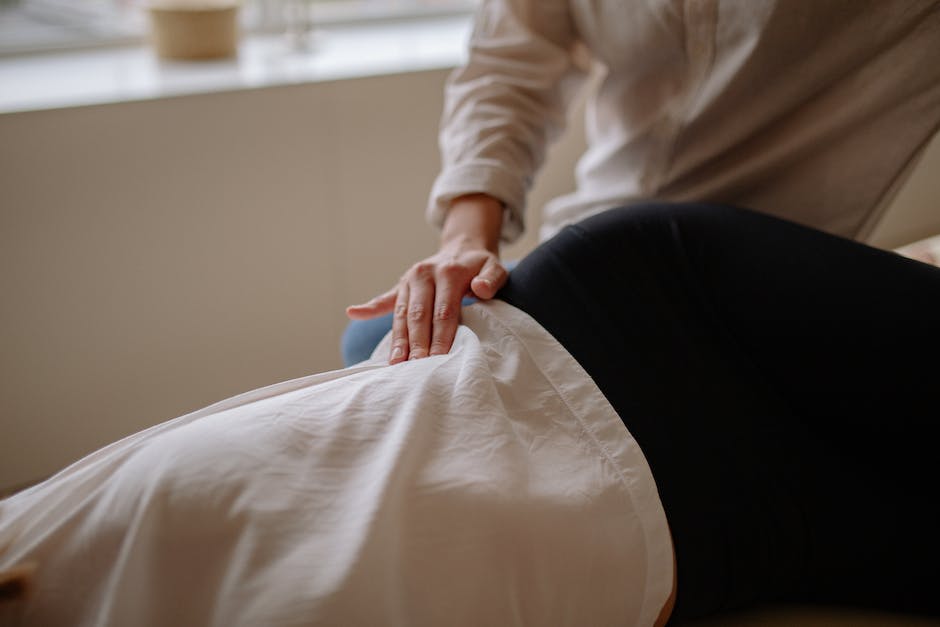With the hustle and bustle of everyday life, it’s common for many of us to neglect our body’s needs for relaxation and well-being. Among various methods, belly massage stands out as a self-care practice that has been acknowledged to offer wonderful benefits for digestion, relaxation, and overall health. This practice walks hand in hand with the natural functioning of our body, by stimulating the digestive system and promoting better gut health. It’s crucial, however, to comprehend the crucial factors including when it’s the right time to perform it, the different techniques, the appropriate pressure application, and safety measures. This knowledge not only ensures safety but also maximizes the benefits of belly massage.
Understanding the Basics
Understanding Belly Massage: An Overview
Belly massage, also known as abdominal massage, utilizes gentle hands-on manipulation of the abdominal area to address issues related to digestion and overall gut health. The stimulation from the massage can encourage movement in the gastrointestinal tract, aiding in the breaking down of food and removal of waste products. It is suggested for those dealing with constipation, bloating, and overall discomfort associated with gastrointestinal issues.
Potential Benefits of Belly Massage
Abdominal massage has been shown to provide numerous benefits for digestion. It can stimulate muscle activity in the intestines, leading to increased frequency of bowel movements and relief from constipation. Additionally, the physical manipulation of the abdomen can help to break up and distribute gases, reducing bloating and discomfort. Some may also find relief from symptoms of IBS (irritable bowel syndrome) through regular belly massage.
How It Should Feel: Pressure and Comfort
A belly massage should apply gentle, yet firm pressure to the abdominal area. The sensation might be described as a gentle kneading or pressing into the soft tissues of your belly. It should never cause pain or discomfort. If it does, the massage should be immediately stopped. Some individuals might experience a ‘fluttery’ feeling, which can be indicative of movement in the intestines, a natural byproduct of the massage stimulating the digestive system.
Recognizing When Not to Do a Belly Massage
It’s crucial to recognize when a belly massage might not be appropriate. Pregnant individuals should avoid abdominal massage, as it can potentially disrupt the fetus or induce labor. If you have any inflammatory conditions, such as Crohn’s disease, diverticulitis, or an ulcer, it’s essential to avoid belly massage as it can exacerbate these issues. Additionally, persons with a hernia, recent abdominal surgery, or any form of abdominal pain should also abstain from an abdominal massage. Always consult with a healthcare provider if you’re unsure whether belly massage is safe for you.
Understanding and Respecting Your Body’s Limits
Listen to your own body while doing a belly massage. Start gently and observe how your body reacts. If something feels uncomfortable or wrong, stop immediately. It’s not unusual to feel a bit of discomfort initially, especially if you’re dealing with issues like constipation or bloating. However, continued pain or any form of sharp pain isn’t normal, and the massage should be stopped. Monitoring your body’s responses is key in safely and effectively implementing a belly massage routine at home.

Massage Techniques
Understanding Belly Massage Techniques
Belly massage, also known as abdominal massage, incorporates various techniques to relieve tension, aid digestion, and improve overall wellness. By applying direct pressure to the abdominal area, blockages get released, and the body’s natural healing process is stimulated.
The Clockwise Motion Technique
One of the most common ways to give a belly massage is through applying a clockwise motion with your hands. You should begin just above the right hip bone and slowly make circles that become larger and larger as you move up and around the belly. Repeat the circular motion five to ten times. This follows the natural direction of digestion and helps with constipation and bloat.
The “I Love U” Technique
The ‘I Love U’ technique involves tracing the letters I, L, and U on the belly to ease digestion and eliminate waste. Start to the right of your child’s belly button for ‘I.’ Move your fingers in a downward straight line. Draw an ‘L’ by moving your fingers from the right of their tummy, across the top of the belly, and downward. Complete the ‘U’ shape by moving your hand from their left hip, up and around the belly button, and down to their right hip.
Finding Pressure Points in the Abdomen
Abdominal pressure points are areas that, when pressed on, can cause a reaction in another part of the body. They can positively affect digestion, relieve pain, and increase overall wellness. Pressure points in the abdomen include the Sea of Energy (located two finger widths below the belly button), Door of Life (located between the second and third lumbar vertebrae), and the Womb & Vital Essence (located about one palm width below the belly button).
Applying Pressure Correctly
Knowing how to apply pressure correctly is critical for a therapeutic belly massage. You should apply pressure gently at first, and gradually increase to a level that is comfortable for the person receiving the massage. Never press down directly on a person’s belly button – instead, apply pressure around it. Reading cues from the person you’re massaging is also essential. Always check-in and adjust pressure as needed. Never cause pain or discomfort.

Preparation and Safety Measures
Setting the Ideal Environment for Belly Massage
Preparation for an at-home belly massage starts with creating suitable conditions. Choose a quiet, well-lit room where the participant can lie down comfortably – either on a bed or a floor mat. Ensure the ambient temperature is cozy enough to relax in without clothing on the stomach area. You can play soft, soothing music if it helps to create a peaceful atmosphere.
Choosing the Right Products for Belly Massage
The products you use for the massage are also important. Choose a massage oil or lotion that is gentle on skin. Look for unscented products or those with natural scents, such as lavender or chamomile, that can also have relaxing properties. Alternatively, you can also use a mild baby oil. Always check for allergies beforehand. Test the oil or lotion on a small area of skin before the massage to ensure there is no adverse reaction.
Proper Hygiene and Safety Measures
Hand and personal hygiene are crucial when preparing for a belly massage. Make sure your hands are clean; nails should be short and filed to prevent accidental scratches. Remove any jewelry that could cause irritation or injury. Your hands should be warm when you begin the massage. You can accomplish this by rubbing your hands together briefly with a little bit of the massage oil.
During the Massage Session
Safety is critical during the massage. Gentle, circular strokes are generally safe, but caution must be taken near the navel and lower abdomen, especially if the individual has any underlying health conditions. If the person feels any discomfort or pain during the massage, stop immediately.
Post-Massage Care
After the massage, allow the participant some time to rest and relax. They should drink plenty of water to stay hydrated and help flush any toxins that may have been released during the massage. Remove any remaining massage oil or lotion from their stomach with a clean, warm towel.
Precaution for Specific Communities
Note that there are certain groups who should avoid belly massages or seek professional guidance before attempting it at home. These include pregnant women, individuals with digestive disorders, people who have just had surgery, and those with skin conditions. If you’re uncertain whether a belly massage is safe, always consult a healthcare professional.

Regular Practice
Step 1: Preparation
Before you start your belly massage, make sure you’re in a comfortable, relaxed environment. Lie down, or sit in a comfortable chair, where you can easily reach your abdomen. Dress in soft, comfortable clothing that allows you easy access to the area.
Step 2: Hand Positioning
Begin by placing one or both of your hands on your belly. Ensure your hands are warm for a comforting sensation. You can use other parts of your hand, like your fingers, palms, or the heel of your hand, depending on what feels comfortable for you.
Step 3: Starting the Belly Massage
Start your belly massage by making small circles around your navel, or belly button, in a clockwise direction. This direction is recommended as it is the same direction that your intestines move, encouraging digestion.
Step 4: Gradual Expansion
Gradually expand your circles every few minutes, maintaining the clockwise motion. This technique covers the entire abdomen area.
Step 5: Increasing Pressure
Over time, slowly increase the pressure of your hands against your belly. But remember to keep the pressure gentle and comfortable. This massage should not cause you any pain.
Step 6: Reversing the Circle Direction
After about 10 minutes, or when you feel ready, you can switch to counterclockwise circles. This can assist with releasing gas and decreasing bloating.
Step 7: Winding down the Massage
To end your belly massage, gradually decrease your circle’s size, eventually bringing your hands back to rest around your navel. Allow your hands to rest here for a few moments and take some deep breaths.
Regular Practice: Increasing Complexity and Duration
Although you might only be able to do a short belly massage initially, with regular practice, you can increase both the duration and the complexity of your massage. You might add in other techniques, such as kneading, pressing, and rolling. However, always ensure that any additions remain comfortable and beneficial for your body.
As your practice expands, try doing a belly massage for up to 30 minutes per session. This regular practice can help reduce stress, improve digestion, and increase relaxation.

After ensuring adequate knowledge and understanding, the last and the most important step is to put what you’ve learned into practice. Embrace the art of belly massage into your daily routine or at least a few times per week. As you progressively advance in complexity and duration, you’ll discover a personal rhythm and achieve a deeper connection with your body. While it’s essential to follow the advised massages and precautions, don’t forget the driving force behind belly massage is the intention to show love and care towards your body. In fostering this bond with your body, you not only enhance your physical health but also instigate a harmonic and healthy balance between your mind, body, and soul.
